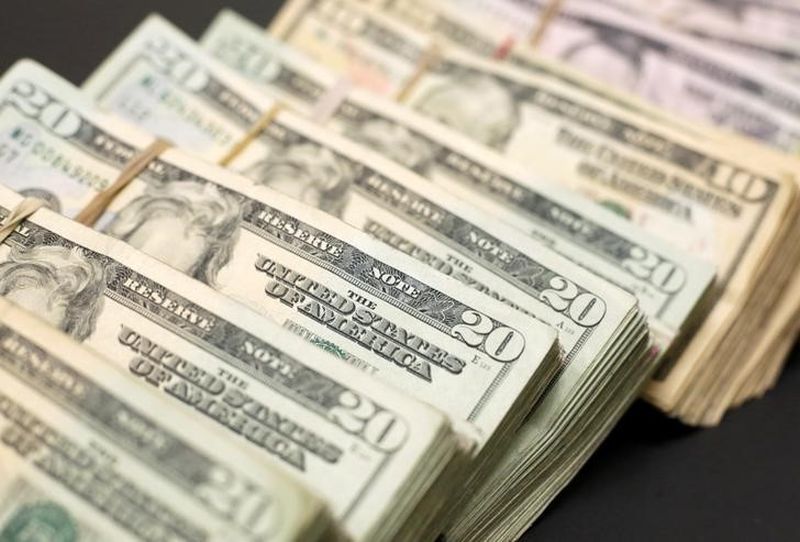WASHINGTON, Aug 31 — US consumer spending increased solidly in July as households bought a range of goods and services, which could further allay financial market fears of a recession, but the strong pace of consumption is unlikely to be sustained amid tepid income gains.
The report from the Commerce Department yesterday added to July trade and inventory data in suggesting that while the economy was slowing, it was not losing altitude rapidly for now. But risks to the longest economic expansion in history are mounting, mostly from a year-long trade war between the United States and China.
The trade fight between the two economic giants has spooked financial markets and caused an inversion of the US yield curve, which has stoked fears that the economic expansion now in its 11th year is in danger of being derailed by a recession.
“Even with elevated policy uncertainty and financial market turbulence, the US consumer continues to display great vitality, emboldened by a large savings buffer,” said Lydia Boussour, senior US economist at Oxford Economics in New York.
Consumer spending, which accounts for more than two-thirds of US economic activity, rose 0.6 per cent last month after an unrevised 0.3 per cent gain in June, the government said.
Economists polled by Reuters had forecast consumer spending advancing 0.5 per cent last month. Consumer spending is being driven by a strong labor market, which is marked by the lowest unemployment rate in nearly 50 years, and better job security.
But with Washington due to slap additional tariffs on Chinese goods on September 1 and in December, there are concerns that consumer spending could take a hit.
A survey from the University of Michigan yesterday showed its consumer sentiment index in August dropping by the most since December 2012, amid nervousness about the trade tensions.
Earlier this week, a survey from the Conference Board, which focuses heavily on the labor market, showed a mild drop in consumer sentiment in August. The stock market has a bigger weighting in the University of Michigan consumer sentiment survey.
“The link between sentiment and spending is not especially tight, but the recent decline in consumer sentiment could be a sign that the spending data will soften soon,” said Daniel Silver, an economist at JPMorgan in New York.
The US-China trade conflict has weighed heavily on manufacturing and business investment, which contracted in the second quarter. That, together with slowing global growth as well as persistently low domestic inflation, will likely see the Federal Reserve cutting interest rates again next month.
Fed Chairman Jerome Powell said last week that the economy was in a “favourable place,” but reiterated that the US central bank would “act as appropriate” to keep the economic expansion on track. The Fed lowered its short-term interest rate by 25 basis points last month for the first time since 2008, citing trade tensions and slowing global growth.
The dollar firmed against a basket of currencies, while US Treasury prices fell. Stocks on Wall Street were trading higher.
Low inflation
Consumer prices as measured by the personal consumption expenditures (PCE) price index rose 0.2 per cent in July as a drop in the cost of food was offset by a surge in energy goods and services. The PCE price index edged up 0.1 per cent in June.
In the 12 months through July, the PCE price index increased 1.4 per cent after gaining 1.3 per cent in June.
Excluding the volatile food and energy components, the PCE price index rose 0.2 per cent last month, matching June’s increase. That kept the annual increase in the so-called core PCE price index at 1.6 per cent in July.
The core PCE index is the Fed’s preferred inflation measure and has undershot the US central bank’s 2 per cent target this year.
“While the shorter-term trend in core prices has picked up, the low yearly rate, along with the recent escalation in trade protectionism, can only spur the Fed to pull the easing trigger again on September 18,” said Sal Guatieri, a senior economist at BMO Capital Markets in Toronto.
When adjusted for inflation, consumer spending increased 0.4 per cent in July. This so-called real consumer spending rose 0.2 per cent in June. Last month’s jump in core consumer spending suggested consumption remained strong early in the third quarter after it surged at its fastest pace in 4-1/2 years in the second quarter.
The economy grew at a 2.0 per cent annualised rate in the second quarter, slowing from the January-March quarter’s brisk 3.1 per cent pace. Growth estimates for the third quarter range from a 1.5 per cent rate to a 2.3 per cent pace.
The economy is largely losing speed as the stimulus from the White House’s US$1.5 trillion (RM6.3 trillion) tax-cut package and a government spending blitz fades.
Last month, spending on goods surged 0.9 per cent, driven by outlays on recreational goods and motor vehicles. Spending on services increased 0.5 per cent. Consumer spending in July was supported by savings as personal income edged up 0.1 per cent, the smallest rise since last September. That followed a 0.5 per cent increase in June.
Wages increased 0.2 per cent and personal interest income fell 1.8 per cent. Savings fell to US$1.27 trillion, the lowest level since November 2018, from US$1.32 trillion in June. — Reuters






















